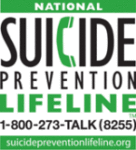Suicide Prevention Week: Life is Worth Living!

What’s the Problem?
Suicide is a serious public health problem that affects many young people. In fact, it is the third leading cause of death for youth between the ages of 10 and 24. Each year, approximately 157,000 youth are treated in emergency rooms across the U.S for self-inflicted injuries. While more young people survive suicide attempts than actually die, there are 4,600 lives lost each year. A nationwide survey of high school students in the United States found that 16% of students reported seriously considering suicide, 13% reported creating a plan, and 8% reporting trying to take their own life in the 12 months preceding the survey.
Who’s at Risk?
Suicide affects all youth, regardless of age, race/ethnicity, sexual orientation, or religion; however, some groups are at higher risk than others. According to the CDC, boys (81%) are more likely than girls (19%) to die from suicide. Girls, however, are more likely to report attempting suicide than boys.
Several factors can put a young person at risk for suicide; but having risk factors does not always mean that a young person will attempt suicide. Risk factors include:
- Family history of suicide
- History of depression or other mental health problems
- Incarceration
- Easy access to lethal means
- Alcohol and drug use
- Exposure to previous suicidal behavior by others
- Frequent moving from one place to another that might decrease opportunities for developing healthy social connections and supports
Can It Be Prevented? Know the Signs!
While there is a variety of prevention efforts focused at detecting suicide warning signs. Signs that a young person may be contemplating suicide include, but are not limited to:
- Talking, writing, or drawing pictures about suicide
- Making statements about feeling hopeless, helpless, or worthless
- A deepening depression
- Preoccupation with death
- Taking unnecessary risks or exhibiting self-destructive behavior
- Out of character or rebellious behavior
- A loss of interest in the things one cares about
- Withdrawal from friends and family members
- Changes in the quality of schoolwork or lower grades
- Drug or alcohol abuse
- Making arrangements; setting one’s affairs in order
- Giving prized possessions away
You can help prevent a young person from attempting/committing suicide by knowing the risk factors and warning signs! If you or someone you know is contemplating suicide, seek help as soon as possible! Reach out to a parent, friend, teacher, or contact your local/national suicide hotline.
And remember:
Life is worth living!
For more information, visit the National Suicide Prevention Lifeline or visit the Mental Health page on Teenhealthmatters.org for local resources.
Need help? Know someone who does?

Contact the National Suicide Prevention Lifeline
- Call 1-800-273-TALK (1-800-273-8255)
- Use the online Lifeline Crisis Chat.
Both are free and confidential. You’ll be connected to a skilled, trained counselor in your area.
[social_link type=”twitter” url=”https://twitter.com/teenhlthmatters” target=”” ][social_link type=”facebook_account” url=”https://www.facebook.com/TeenHealthMatters/” target=”” ] [social_link type=”instagram_account” url=”https://www.instagram.com/teenhealthmatters_/” target=”” ]
